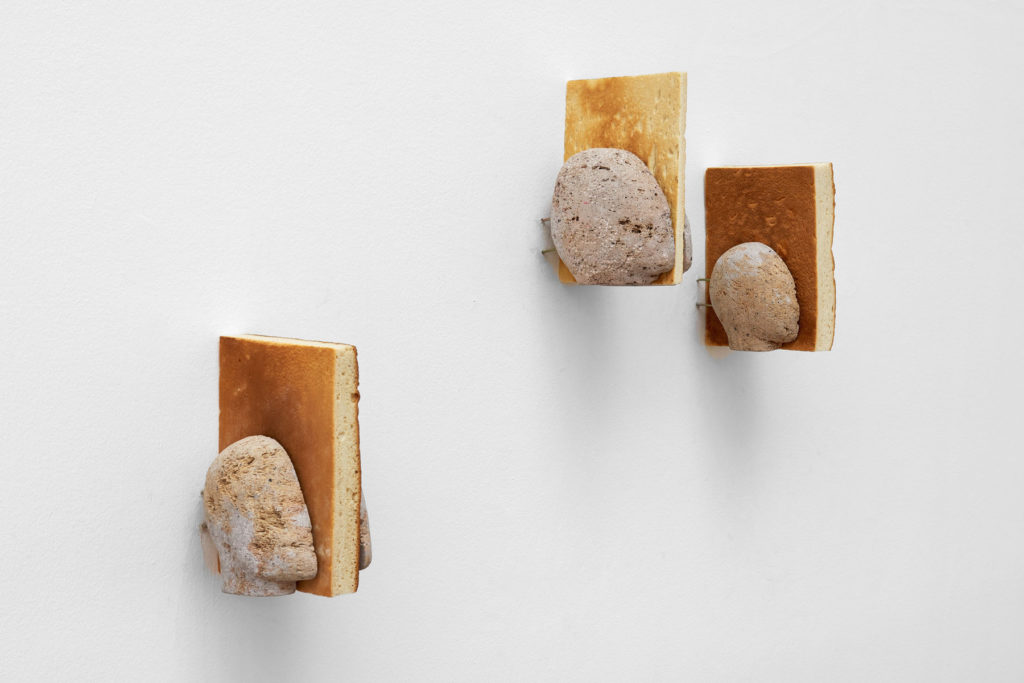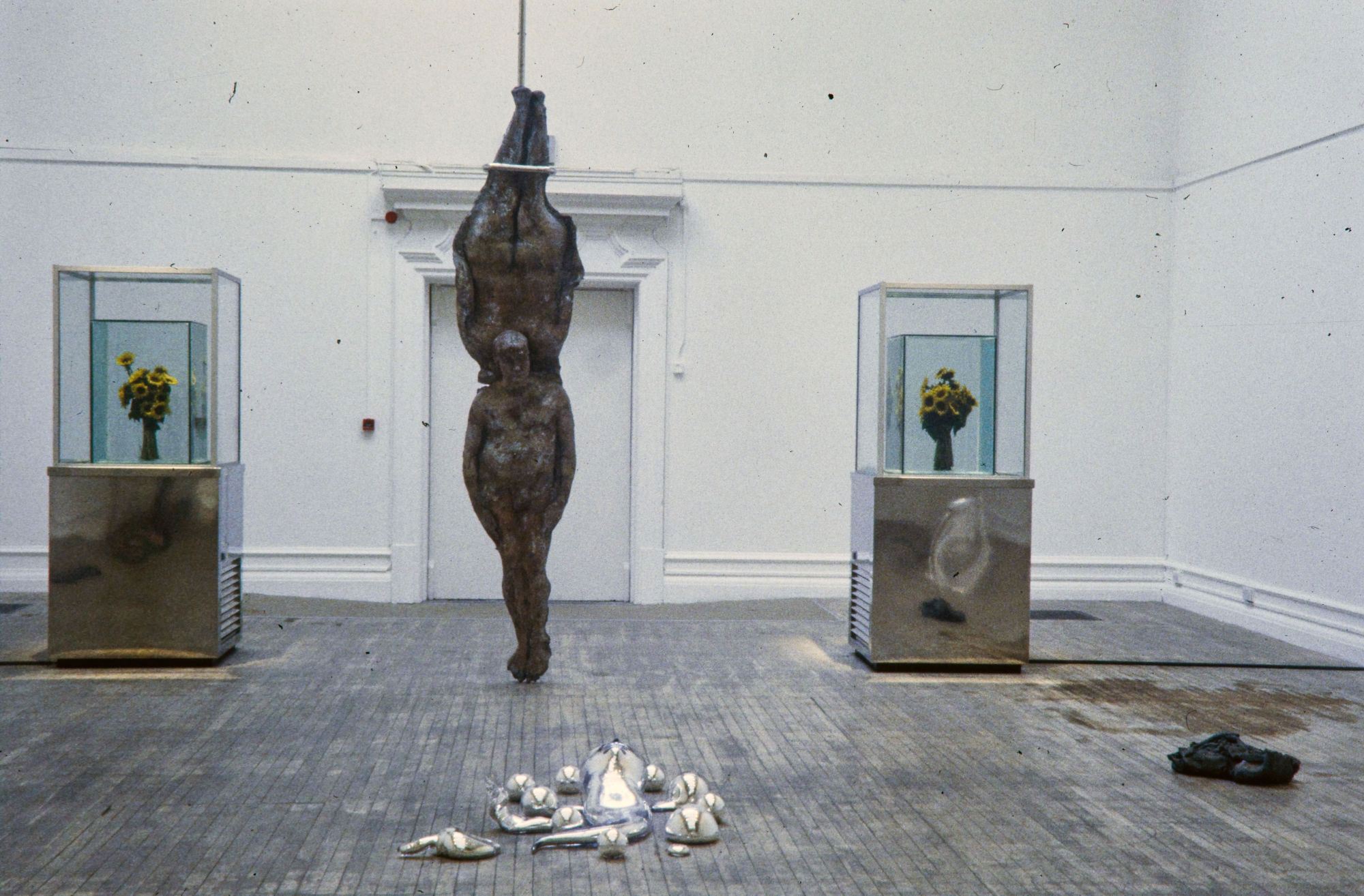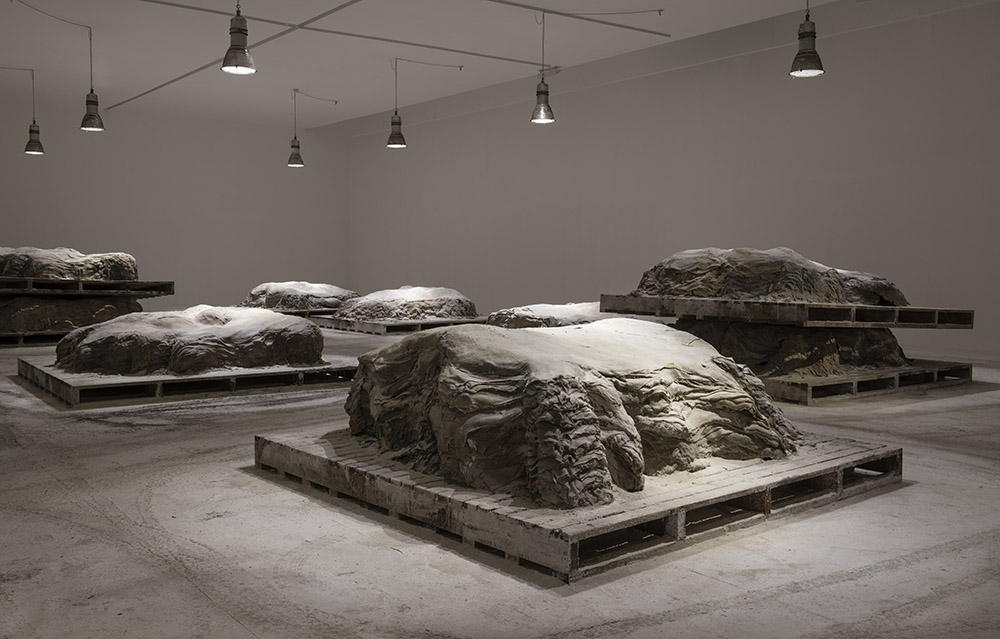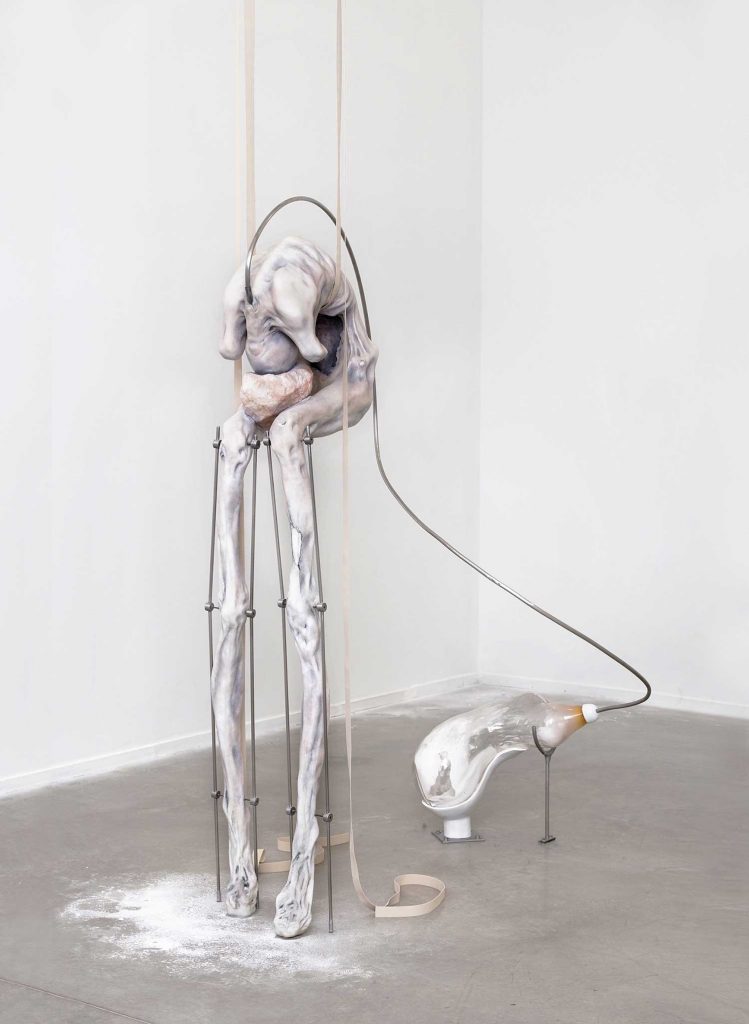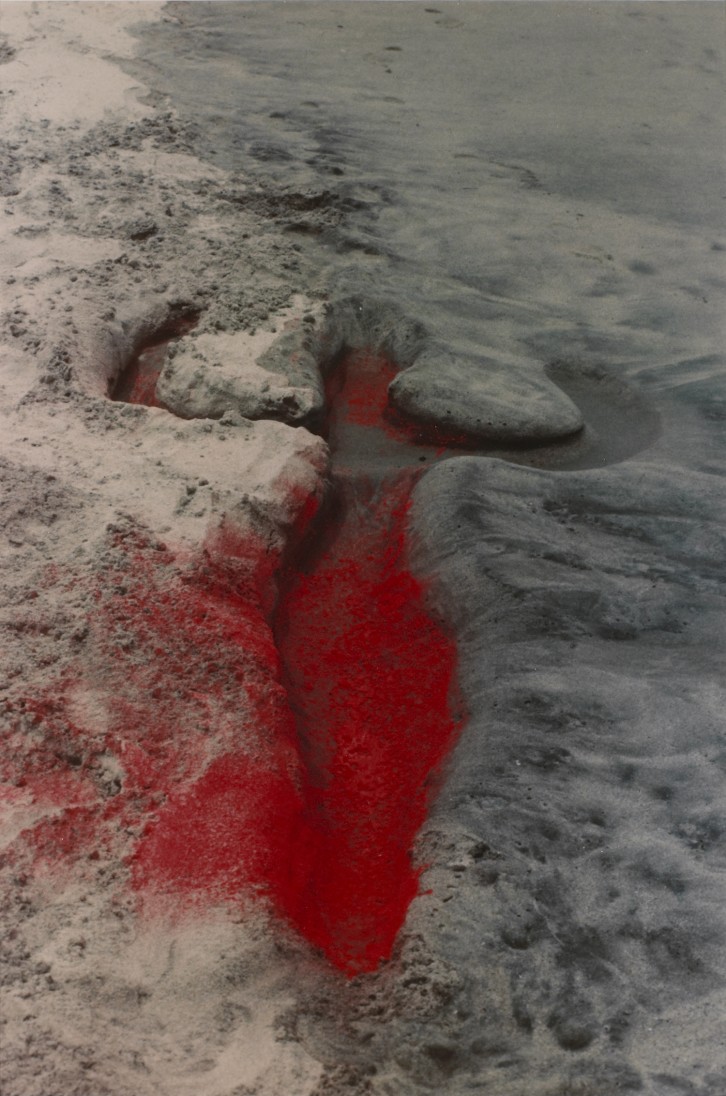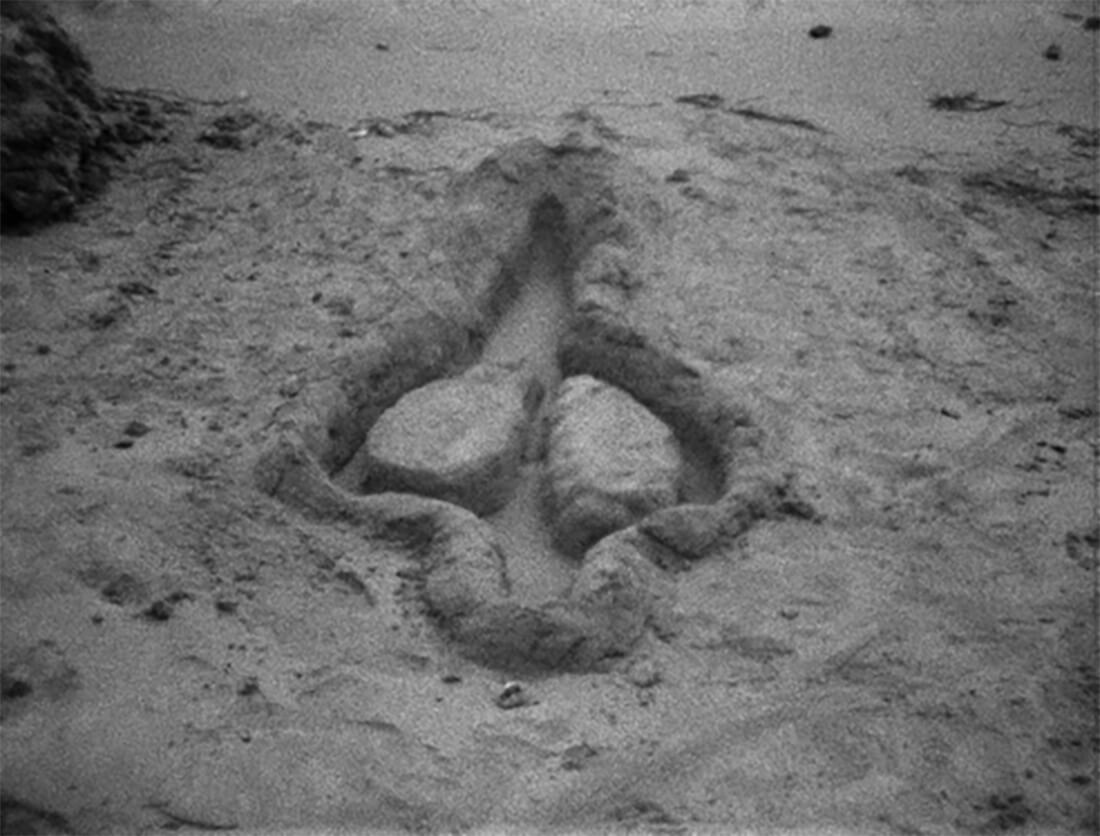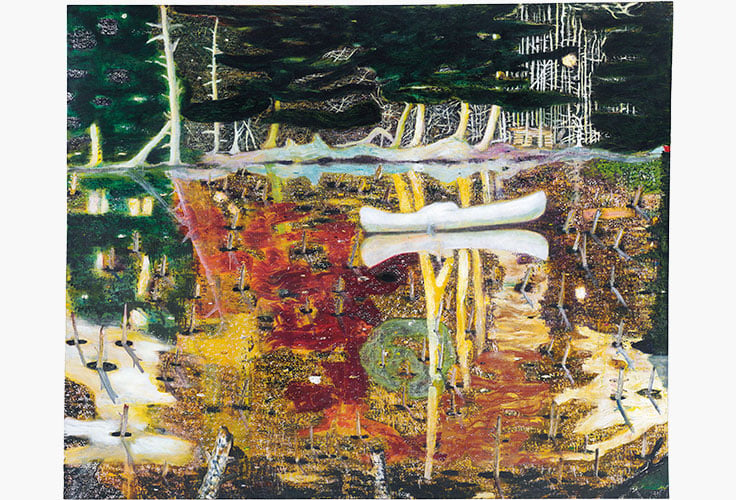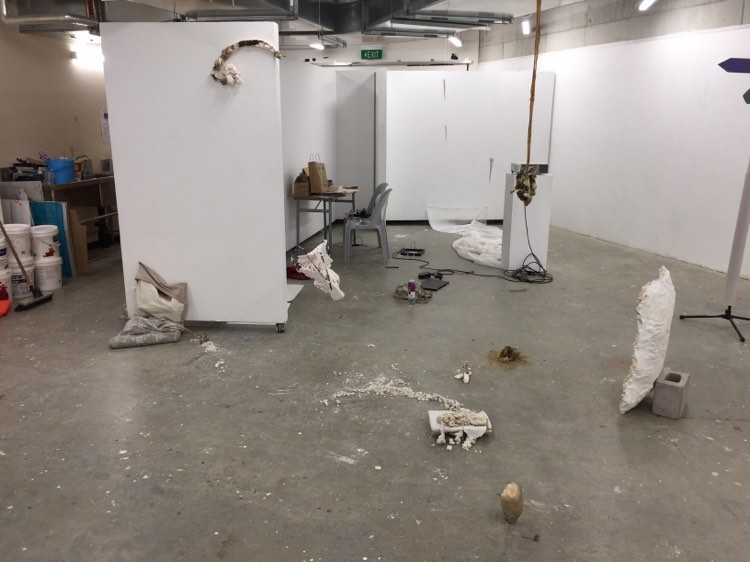
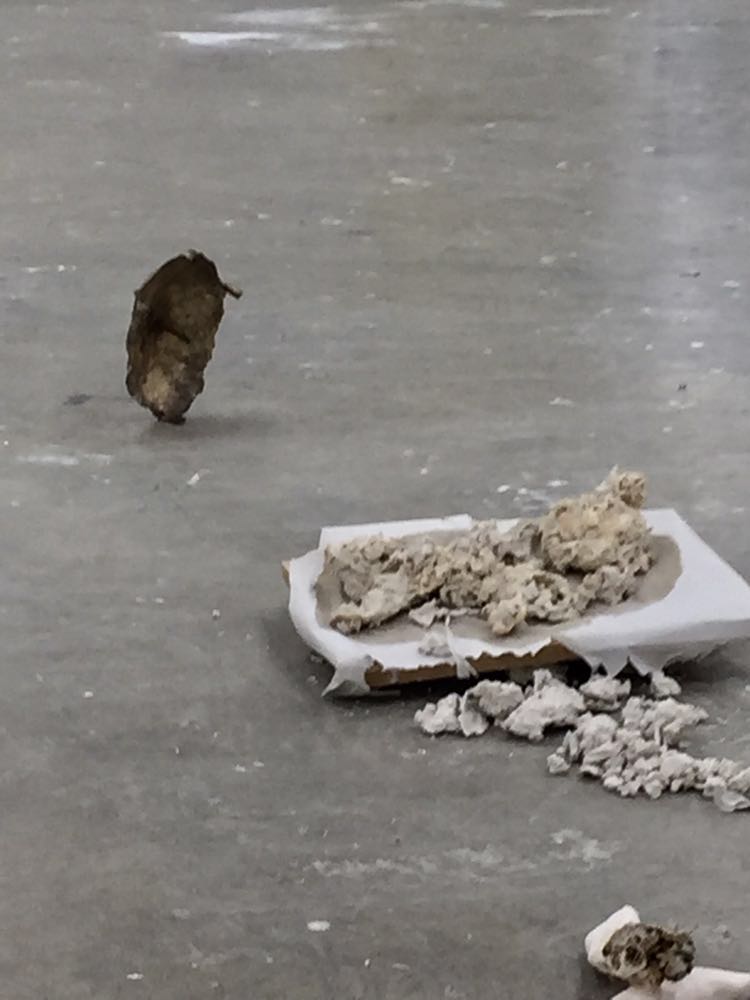
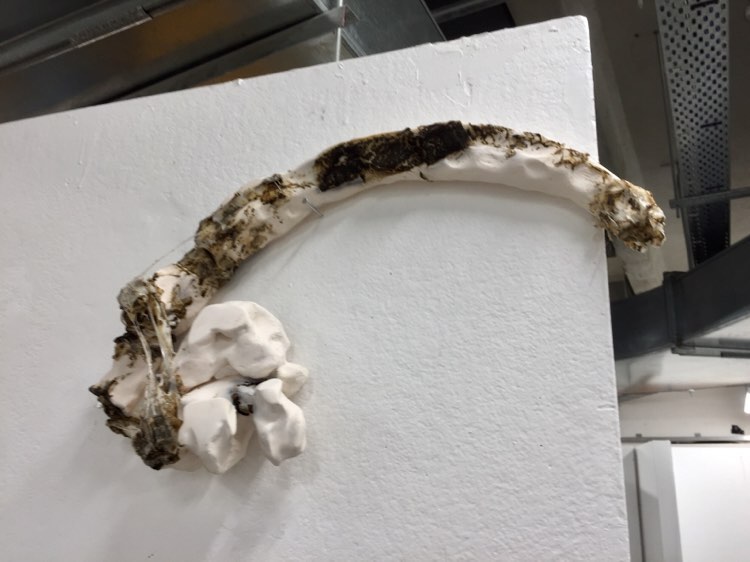
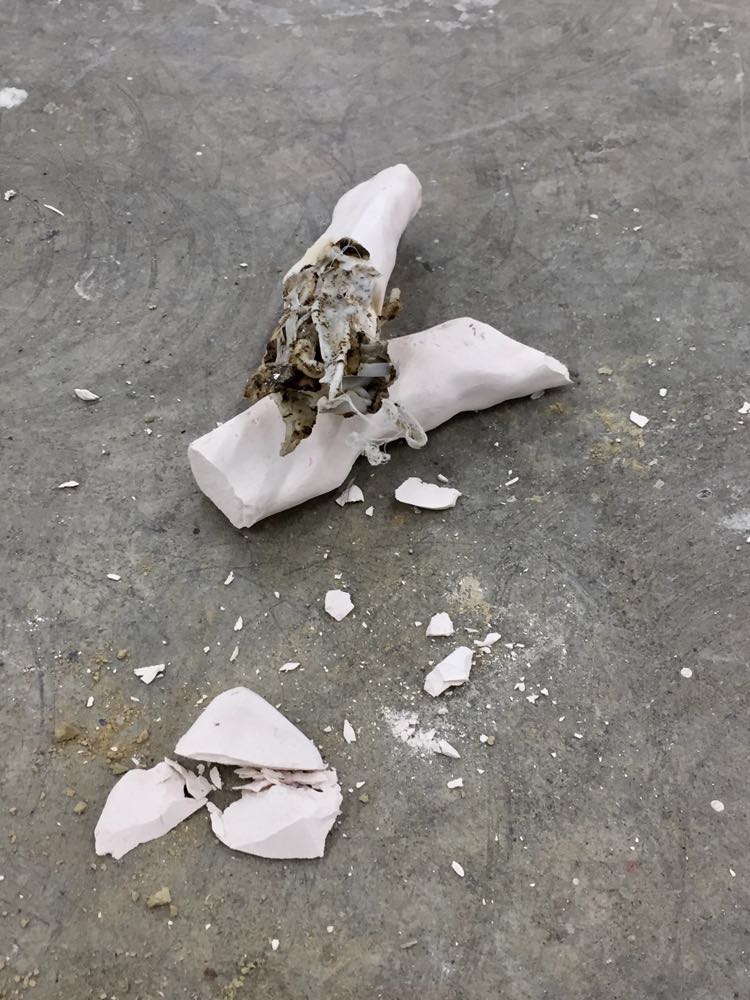
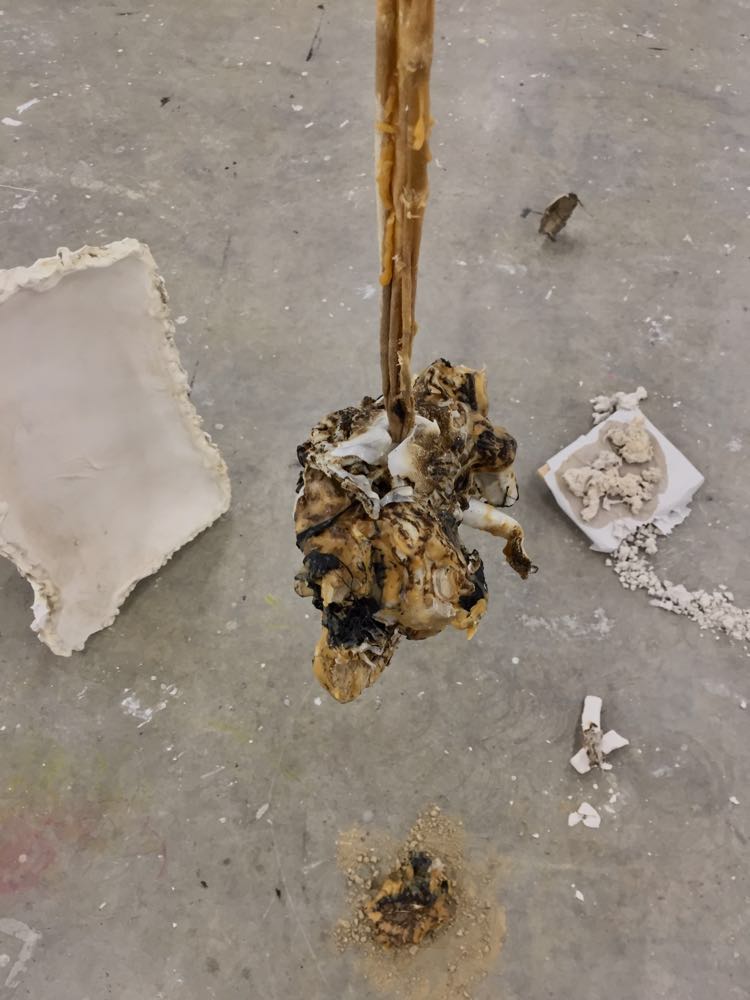
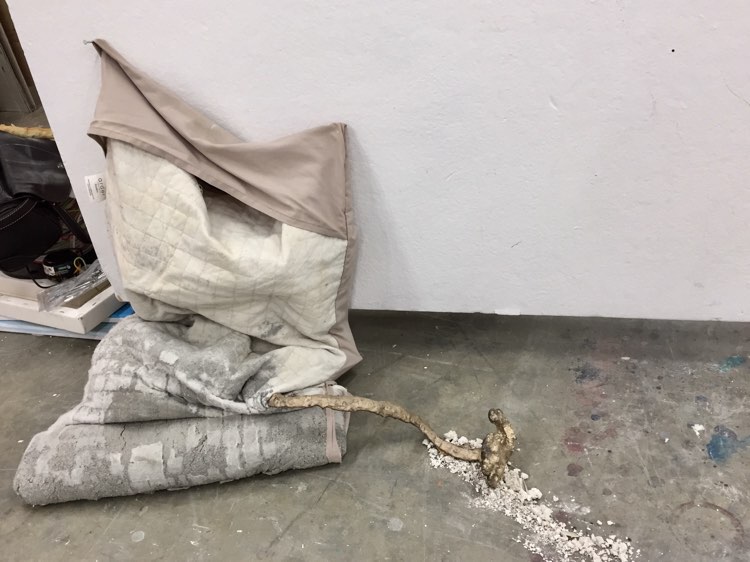
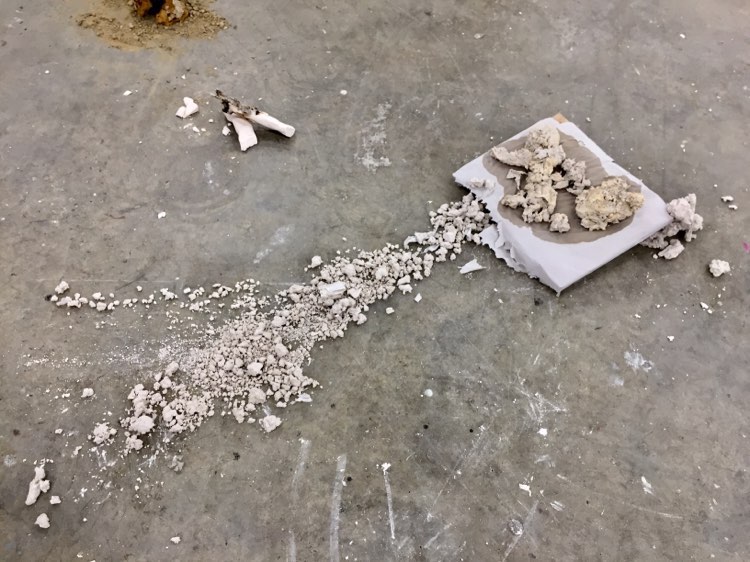
Through this process of construction/deconstruction I was interested in the ways the boundaries of the bodies could be explored both fragmentedly and structurally. Objects were manipulated, with or without control as I wanted to express the flexibilities within the materiality but also the lines and structures it holds in our breath, body, rooms, spaces, cities and concepts. Unlike in a liminal space, the push pull relationship between positive and negative space is a conversation, and I wanted to show the undulating feelings/movement between these polarizations.
A direct response of this was Mark Quinns casts, as he often plays with this inside/outside ideas within his sculptures and I found it strongly directed me as I leaned on it when I was installing the works.
While I feel successful in the ways I was able to construct this, there is definitely more opportunities to explore the idea of positive/neg through the materiality of the objects. This was attempted by using plaster with latex, pumice, paper, cement, and I felt like I was on to something molding these on thin wire, and melting bio-plastic to describe fascia on wet clay. Perhaps the molding of these/melted bio-plastic held the structures themselves rather than wire or mesh; maybe the inside/outside could be constructed further than the plaster mold as the object itself. Using remnants of the construction to define borders of the objects, I feel like this could be further explored my latexing, charcoal rubbing paths, walls etc.










